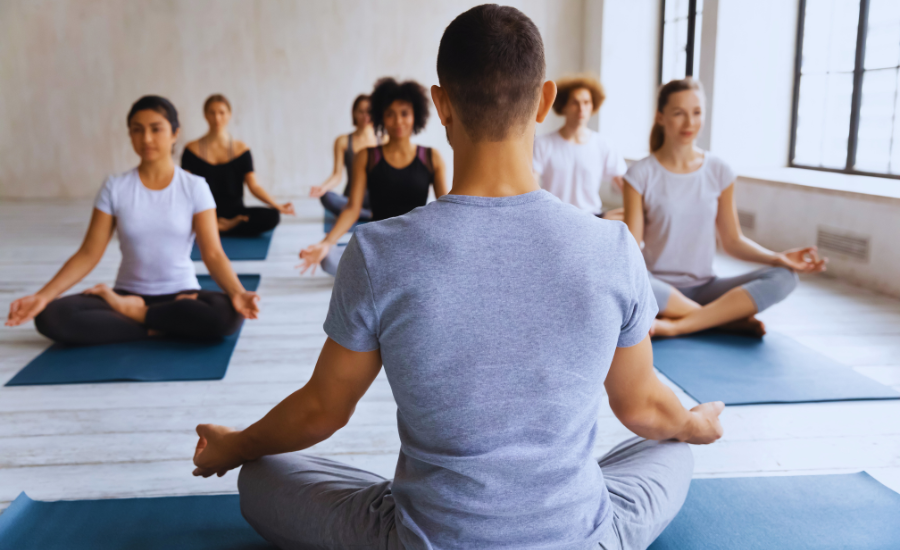Certified Yoga Teachers: Building a Bridge Between Tradition and Modern Wellness

Yoga, an ancient practice with roots in India, has journeyed through centuries to become a global phenomenon. While its core philosophy remains rooted in tradition, the way it is taught and practiced today has evolved to suit the needs of modern life. At the heart of this evolution are certified yoga teachers — professionals who carry the wisdom of ancient yoga while adapting it to contemporary wellness trends.
These teachers are more than just fitness instructors; they are guides who help students connect mind, body, and spirit. They understand that yoga is not just about flexibility or balance, but about fostering overall well-being.
The Heritage of Yoga: More Than Just Poses
Yoga’s origins date back over 5,000 years, with ancient texts like the Yoga Sutras of Patanjali outlining principles that go beyond physical postures. The traditional practice encompasses asanas (poses), pranayama (breathing techniques), dhyana (meditation), and ethical guidelines for living.
Certified yoga teachers often undergo rigorous training that includes studying these foundational philosophies. This ensures that when they step into a classroom — whether in a bustling Mumbai studio or an online session — they bring authenticity to their instruction.
The Rise of Modern Wellness
Today, wellness has become a mainstream priority. From corporate executives seeking stress relief to young professionals aiming for better posture after long hours at a desk, people are turning to yoga for solutions.
Modern yoga classes often blend traditional techniques with contemporary fitness and mindfulness practices. Certified teachers play a key role here — they adapt ancient methods to suit current lifestyles without losing their authenticity. For example:
- Short, high-impact yoga flows for busy schedules.
- Yoga for athletes focusing on mobility and injury prevention.
- Mindful breathing sessions for stress management.
What Makes a Certified Yoga Teacher Different?
While anyone can guide basic stretches, a certified yoga teacher brings credibility, safety, and depth to the practice. Yoga Certification typically involves:
- Extensive Training – Usually 200 to 500 hours of study, covering anatomy, philosophy, teaching methodology, and practical teaching experience.
- Knowledge of Modifications – Certified teachers know how to adjust poses for beginners, seniors, or those with injuries.
- Alignment Expertise – Proper posture prevents injuries and maximizes the benefits of each pose.
- Ethical Standards – Most certification programs emphasize respect, inclusivity, and safe practice environments.
This training ensures that students not only enjoy their practice but also build it on a strong, safe foundation.
Bridging Tradition and Modern Needs
The beauty of certified yoga teachers lies in their ability to connect two worlds:
- From Tradition – Preserving the spiritual and philosophical roots of yoga, such as mindfulness, breathing, and self-awareness.
- For Modern Life – Designing yoga classes that address current challenges like anxiety, sedentary lifestyles, and digital fatigue.
For instance, a teacher might start a corporate wellness session with a traditional pranayama technique, then transition into gentle desk-friendly stretches, finishing with a short meditation — all within 30 minutes. This makes yoga accessible, relevant, and impactful.
The Role of Certified Yoga Teachers in the Global Wellness Movement
With yoga studios, retreats, and online platforms expanding worldwide, certified teachers are ambassadors of a practice that transcends borders. They adapt language, class length, and teaching style for diverse audiences while honoring the essence of yoga.
Their roles today often extend beyond physical instruction:
- Community Builders – Creating safe, inclusive spaces where students feel connected.
- Wellness Educators – Guiding people toward healthier habits beyond the mat.
- Mindfulness Coaches – Helping students manage stress, improve focus, and boost mental clarity.
How to Find the Right Certified Yoga Teacher
If you’re looking to start or deepen your yoga journey, consider these tips:
- Check Credentials – Look for certification from recognized organizations like Yoga Alliance or equivalent bodies.
- Assess Teaching Style – Attend a trial class to see if the teacher’s approach matches your needs.
- Ask About Specializations – Some teachers focus on prenatal yoga, therapeutic yoga, or advanced asanas.
- Read Reviews – Student feedback can reveal the teacher’s professionalism and impact.
Final Thoughts: The Path Forward
Yoga has survived and thrived for thousands of years because it adapts without losing its soul. Certified yoga teachers are the bridge — honoring the depth of tradition while meeting the demands of modern life.
In an age where wellness often leans toward quick fixes, they remind us that true well-being comes from balance, patience, and mindful living. Whether you join a sunrise class in a park, a virtual session from your living room, or a specialized workshop, having a certified teacher ensures your practice is both safe and transformative.
As the global interest in yoga continues to grow, certified yoga teachers will remain at the forefront — guiding, inspiring, and reminding us that this ancient path still has much to offer in our modern world.
